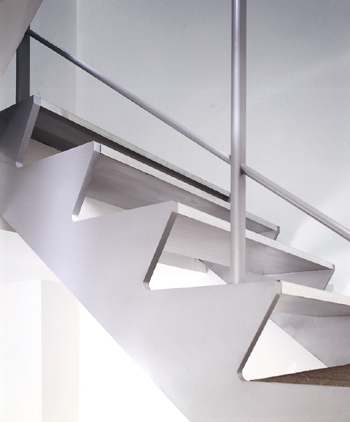Architects working methods are often thought of as somewhat mysterious and like most creative pursuits they involve artistic moments that defy straightforward analysis. However, there is a logical process whereby a project is developed from the first thoughts in a clients mind through to the construction of the building and the management of it's subsequent life-cycle.
Generally the design and construction process is divided into a series of Work Stages as defined by the RIBA Plan of Work. During the Pre-Construction period the proposals are developed in increasing detail, Stage by Stage, until they are ready to be built. Once the final decision has been taken to implement the proposals the Construction period can begin.
These Work Stages provide an industry standard framework that assists in describing the level of detail that a given set of proposals has achieved, and helps in staging services supplied by other members of the project team should they be required (e.g. structural and services engineers, quantity surveyors, planning supervisors and others).
Strategic / Preparation :
Stage 0 - Strategic Definition - Identification of Client's Business Case and Strategic brief, and other core project requirements .
Stage 1 - Preparation and Brief - Develop Project Objectives including Quality Objectives and Project Outcomes, Sustainability Aspirations , Project Budget, other parameters or constraints and develop Initial Project Brief. Undertake Feasibility Studies and review of Site Information
Pre-Construction :
Stage 2 - Concept Design - Prepare Concept Design, including outline proposals for structural design, building services systems, outline specifications and preliminary Cost Information along with relevant Project Strategies in accordance with Design Programme. Agree alterations to brief and issue Final Project Brief
Stage 3 - Developed Design - Prepare Developed Design, including coordinated and updated proposals for structural design, building services systems, outline specifications, Cost Information and Project Strategies in accordance with Design Programme. Planning Applications are typically made using the Stage 3 output.
Stage 4 - Technical Design - Prepare Technical Design in accordance with Design Responsibility Matrix and Project Strategies to include all architectural, structural and building services information, specialist subcontractor designs and specifications, in accordance with Design Programme. Prepare and submit Building Regulations submission and any other third party submissions requiring consent.
Note - Information exchanges will vary depending on the selected procurement route and Building Contract.
Construction :
Stage 5 - Construction - Offsite manufacturing and onsite Construction in accordance with Construction Programme and resolution of Design Queries from site as they arise. Administration of the Building Contract, including regual site inspections and review of progress.
Stage 6 - Handover and Close Out - Handover of building and conclusion of Building Contract.
Stage 7 - In Use - Undertake In Use services in accordance with Schedule of Services.
13 Charlotte Street, London :
Stair detail - office refurbishment with restaurant unit at ground floor and basement. Client : Vale Retirement Trust. Construction Cost : £500,000
